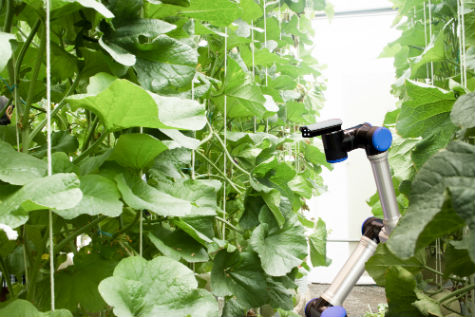Vertical Farming – the future of growing safe food?
By Lois Harris
While there are no industry-wide food safety standards for vertical farming, there are strict protocols that most companies put in place, according to a U.S. expert.
“Vertical farms are, in fact, generally and significantly safer than conventional agriculture,” says Joel Cuello, Ph.D., Vice Chair, Association for Vertical Farming. Cuello is also a Professor of Biosystems Engineering at the University of Arizona. He adds that, at present, most vertical farms don’t seek out internationally recognized food safety certification because of this perception.
The standard practice is using “clean rooms,” in which employees have to disinfect themselves and wear laboratory gowns before entering the facility. The idea is to make sure there are no pathways for microbials to enter the growing room.

Vertical farms are subject to some rules. In the U.S., according to the Food and Drug Administration, they are covered under the Produce Safety Rule, if they make more than $25,000 in annual sales and sell over state lines. All farms and manufacturers that engage in interstate commerce are prohibited from selling adulterated food under the Federal Food, Drug and Cosmetic Act.
Since the Hanging Gardens of Babylon, circa 600 B.C. we’ve had this type of farming. The modern iteration – buildings with multiple stories growing layers of crops on each floor – has been in existence since Dr. Dickson Despommier of Columbia University and his class came up with the idea in 1999.
Their benefits are many. Besides using no pesticides and less land, water and fertilizers, these farms employ a soilless medium. That means the food product is not plagued by the pathogens that sometimes get into field crops. It’s a highly controlled environment in which the temperature, light intensity and humidity are closely monitored and the growing solution is strictly regulated according to Cuello.
He says the use of hydroponics in greenhouses has also been around for a long time, so robust systems for keeping food safe are readily available.
“Of course everything needs to be maintained,” Cuello says, pointing out that the roots of the plants and the plants themselves naturally harbour micro-organisms including bacteria and fungi. In full-blown commercial operations, samples of the circulating liquid are taken and tested about once a week, depending on the facility.
Vertical farms aren’t subject to the unpredictable weather that is becoming more and more frequent with the changing climate. Besides offering a steady supply, the products themselves are more consistent. They’re generally located in or near urban centres, so they can satisfy the growing consumer demand for fresh, locally grown food.
“In the future with artificial intelligence, it will be possible to grow to exact specifications for, for example, size, flavour and nutrients,” Cuello says.
Some farms that are almost fully automated. Cuello cites one Japanese firm that he visited 20 years ago in which the entire growing season for the lettuce it produced was accomplished on a slow-moving conveyor belt. Seedlings were started at one end, and the product was harvested at the other.
At the University of Arizona, Cuello himself has patented a mobile vertical farm which would make for an even cleaner environment because robots are inside with the plants while the human workers are outside monitoring operations remotely. He’s currently working on a prototype.
Vertical farming is still an emerging industry, Cuello says, but it holds a great deal of promise, and the while costs of getting into it are currently very high, they will, over time, become competitive.
About the Author
Lois Harris is principal writer and editor at Wordswork Communications, and she has been part of GFSR’s editorial community since 2017. She brings a strong background in writing for a number of food manufacturers, non-profit organizations, governments and universities to her work on GFSR’s behalf, and has a keen interest in the food safety issues that affect consumers and industry.

Categories: Food Safety, Food Safety Trends, Sanitation/Hygiene
Tags: Food Safety , vertical farming , vertical farms



